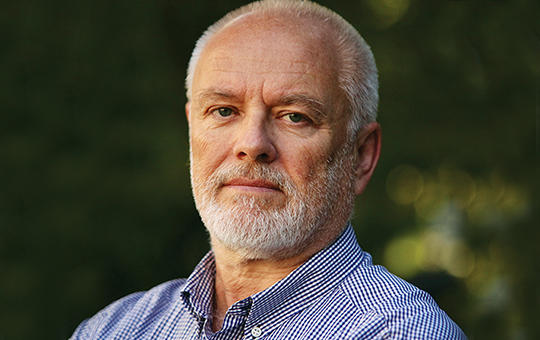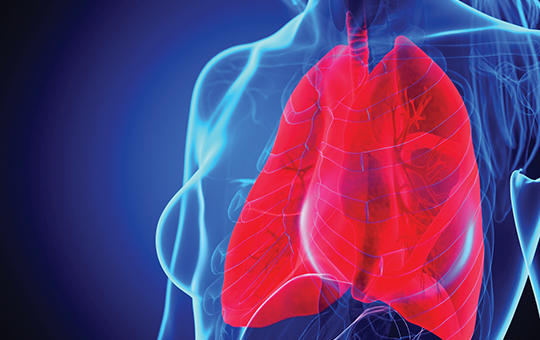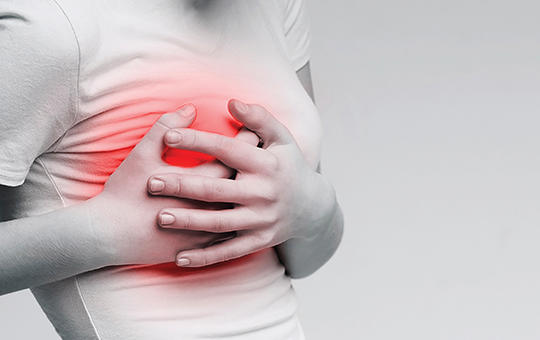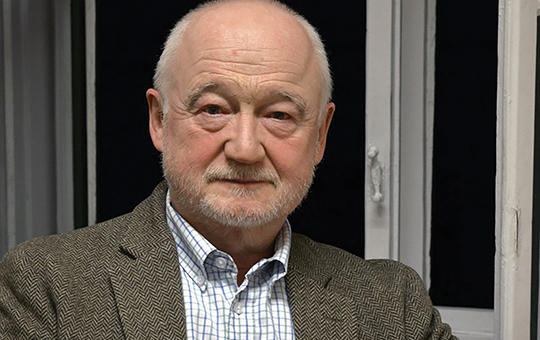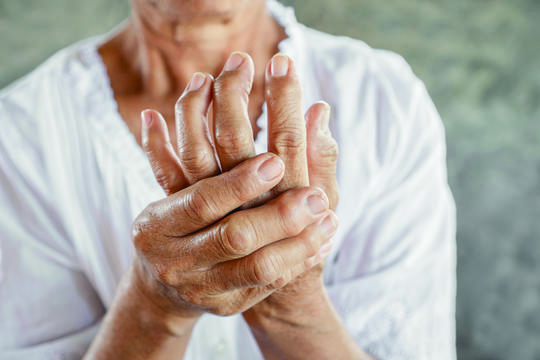The eLitMed.hu medical portal uses computer cookies for convenient operation. Detailed information can be found in the Cookie-policy.
Lege Artis Medicinae - 2024;34(3)
Content
[Chronic thromboembolic pulmonary hypertension ]
[
Chronic thromboembolic pulmonary hypertension (CTEPH) is a vascular disease associated with pulmonary artery thrombosis, which causes changed flow patterns and remodeling of pulmonary blood vessels. CTEPH is a rare long-term complication of pulmonary embolism the cumulative incidence of which ranges between 0.1-9.1 in symptomatic patients. Early sign is the effort dyspnoea, later are dominating the right heart failure symptoms, and rarely the syncope.
CTEPH should be suspected if there are emerging signs of chronic pulmonary artery thrombosis and echocardiography indicates symptoms of pulmonary hypertension. Demonstrating thrombosis V/Q scan, CT angiography or pulmonary angiography can be performed and in case of pulmonary hypertension right heart catheterisation. The modern approach to CTEPH treatment is a multimodality strategy. Pulmonary thromboendarterectomy is the first treatment of choice, but if the patient is not suitable for surgery, or he/she has chronic thromboembolic pulmonary hypertension, balloon pulmonary angioplasty and/or drug therapy should be considered. Treatment of chronic thromboembolic pulmonary hypertension patients is recommended in a CTEPH program center.]
[Recognizing and emergency treatment of deep vein thrombosis of the upper extremities ]
[Deep vein thrombosis of the upper extremities represents only a small part of thromboembolic conditions. Thus, its specific treatment adjusted to the proper pathophysiology is not a routine procedure in the everyday practice. Authors of this summary present pathophysiologic details of this condition, which provide options to form subgroups important for specific treatment. After discussing the diagnostic measures, this study concerns the details of specific subgroup treatments while presenting algorithmically the emergency care scheme of the above-mentioned patient groups. It may be hoped that after gaining necessary information there will be improved the patient management of those suffering from upper extremity deep vein thrombosis caused by thoracic outlet syndrome. As a result, there will be saved more and more upper extremities in a sufficient functional state, suitable even to continue successful professional sport activities. Upper extremity venous thromboembolic events associated with both central venous cannulas and pacemaker electrodes are also presented, taking into consideration the maintenance requirements of the devices, the aspects of anticoagulation and venous circulation. ]
[Significance and diagnosis of diabetic neuropathy in clinical practice]
[Diabetic neuropathy is an early detectable microvascular complication of diabetes. Most often, we can recognize it by its symptoms of distal-type symmetric polyneuropathy, further the damage to the autonomic nervous system is increasing the cardiovascular mortality. Screening for diabetic neuropathy is essential in clinical practice, since the signs of nerve damage related to diabetes can be detected at an early stage and open the way to therapeutic interventions. Proper diagnosis and continuous monitoring of diabetic neuropathy is also important during the patient care. This summary concerns the importance and diagnostic options of diabetic neuropathy for clinical practice.]
[Women and migrain ]
[Migraine is a headache disorder affecting 14% of general population, being even more prevalent (20%) among women in the 20–64 age group, who are actively working and are mainly at reproductive age. 18–25% of migrainous women have an attack related to menstrual cycle, 7% of them having an attack only at this period. Fluctuation of estrogen level may be responsible for these attacks, we can use NSAIDs, slowly acting triptans or progestin-only treatment as short-term prophylaxis. Hormonal contraception is not contraindicated in migraine. Combined (estrogen+progestin) treatment is proposed only in migraine without aura, but in case of more frequent and/or severe attacks or the appearence of an aura treatment should be stopped. In migraineurs with elevated risk of stroke combined hormonal contraception should be used with caution. In migraine with aura patients progestin-only contraception is possible. During pregnancy in 55–91% of migraineus women attacks disappear or are less severe. In most cases migraine with aura attacks occur during this period. Non-pharmacological treatments should be considered as first in the treatment off attacks, with consideration of risk/benefit ratio paracetamol, metamizol or triptans may be used. With the menopause in 2/3 of patients migraine gets better but because of the fluctuation of hormon levels it can be worse than before. Hormonal replacement therapy is not contraindicated in migrainous women but it can result in worsening of migraine. ]
[Blooming again – women’s life paths after brain injury ]
[After a serious brain injury or trauma, there is damaged the functional capacity of the affected persons and their self-image too. Traditional rehabilitation pays little attention to the female patients’ lost femininity. The aim of this study was to present the way of supporting women to realize again their femininity psychologically and physically alike after a brain injury.
In the Brain Injury Rehabilitation Unit of the National Institute for Medical Rehabilitation, the authors completed the female patients’ rehabilitation with special group sessions once a week. The topics were tailored to the needs of participants. There were targeted two specific objectives: achieving to perceive femininity in an autonomous way and regaining the feeling of femininity in the changed life circumstances due to the injury.
Occupational therapist, physiotherapists and nurses provided service to develop functional abilities. A psychologist helped the participants in trauma processing. Since the beginning in January 2022, two therapy cycles have been completed so far, each of which with 10-12 sessions. A total of 31 female patients and 8 supporting team members participated in these two groups so far.
Personalised rehabilitation was adjusted to the involved persons’ life circumstances, individuality, personality, family and social relations. Our experimental female group helped the participants to experience their femininity physically, mentally and psychologically too, according to their feedback.]
[Reducing the risk of atrial fibrillation]
[Atrial fibrillation (AF) is the most common sustained cardiac arrhythmia that can lead to thromboembolic events, including cerebral vascular catastrophe and peripheral embolization. AF treatment while managing directly the arrhythmia aims anticoagulation therapy and prevention of thromboembolic events too.
This study overviews the factors influencing the risk of bleeding while managing AF, and focuses especially on appropriate anticoagulant choice, its tailored use to patient characteristics, management of comorbidities and strategies of reducing risks of bleeding.
This analysis compares the efficacy and safety of specific anticoagulants (VKA, DOAC) while considering the patient characteristics such as renal function and comorbidities in anticoagulation treatment.
The risk of bleeding can be reduced by appropriate anticoagulant choice and its patient-specific administration. Consideration of comorbidities is a key issue to ensure safe and effective treatment. VKA requires maintenance of stable INR values, while DOACs lead to fewer major bleeding events. For planned and emergency interventions, the use of bleeding risk reduction strategies is also important. Consideration of patient characteristics, such as renal function and comorbidities, as well as appropriate anticoagulant choice and use are essential to ensure efficient and safe anticoagulation therapy.
]
[Impact, prevention, and recognition of COPD exacerbations ]
[COPD is a common, preventable, and treatable chronic lung disease causing narrowing of the airways. Currently, it is the third (!) leading cause of death worldwide. COPD is of outstanding importance among chronic diseases: its occurrence is massive, its mortality is high, and the treatment over decades is very expensive. Acute worsening of the patients’ condition at least for two days (typically increasing dyspnoea, cough, and sputum production) is named as exacerbation (AECOPD). Multiple scientific evidence indicates that after AECOPD attacks, the lung function does not return to the previous level and the occurrence of such events increases significantly the risk of hospital admission and mortality. Thus, in addition to the appropriate maintenance (bronchodilator and anti-inflammatory) therapy, avoiding and preventing AECOPDs, as well as their early recognition and adequate treatment relevant to their severity, is a key element of COPD management. The 2023 international guideline for COPD (GOLD 2023) updated the definition and severity classification of AECOPDs by incorporating the cornerstones of the so-called Rome Proposal. This new therapeutic approach, regarded as a milestone in the management of AECOPD, was also included in the latest 2024 GOLD report. This study summarized the abovementioned important changes from the general practitioner’s perspective.]
[Introduction of artificial intelligence based national decision support system to improve stroke care in Hungary ]
[Indication for recanalization therapy of acute ischemic stroke is based on imaging procedures. In order to minimize the time loss passing by recognizing the condition and the transfer of images to other facility, we established a stroke imaging network (eStroke network) supported by Artificial Intelligence (AI) in Hungary. Our study aims to present this system.
Organized by the National Institute of Mental Health, Neurology, and Neurosurgery (NIMNN), we included a total of 28 stroke centers, among them 4 thrombectomy centers. An earlier network of the University of Pécs and the widened network parallel with the NIMNN project cover 10 centers thus the service is now available in 38 stroke centers of this country. Stroke CT scans are automatically transmitted via the central teleradiology server to a central image processing server which analyzes the size of the ischemic area (ASPECT score), detects large vessel occlusion and it’s localization, analyzes the quality of collateral circulation and standard CT perfusion parameters using an AI based software (eStroke, Brainomix Ltd.). Results and processed images are sent automatically back to the PACS system of the sending institution and that of the concerning thrombectomy center and become available in anonymous form via cloud by desktop computers or mobile application.
During the first year of operation, the system has processed 38,060 scans of 16,276 patients. In NIMNN experience by samples of 65 and 152 cases, for drip and ship patients the time from the first alerting of the ambulance service, until arrival at the thrombectomy center was reduced by 38 minutes from 4:18 to 3:40 minutes.
Building an AI based central stroke imaging network for improving of stroke care’s results is technically feasible. Operation of the eStroke system is capable of reducing patient transportation times, however, further optimization is needed. ]
1.
Clinical Neuroscience
Is there any difference in mortality rates of atrial fibrillation detected before or after ischemic stroke?2.
Clinical Neuroscience
Factors influencing the level of stigma in Parkinson’s disease in western Turkey3.
Clinical Neuroscience
Neuropathic pain and mood disorders in earthquake survivors with peripheral nerve injuries4.
Journal of Nursing Theory and Practice
[Correlations of Sarcopenia, Frailty, Falls and Social Isolation – A Literature Review in the Light of Swedish Statistics]5.
Clinical Neuroscience
[Comparison of pain intensity measurements among patients with low-back pain]1.
Clinical Neuroscience Proceedings
[A Magyar Stroke Társaság XVIII. Kongresszusa és a Magyar Neuroszonológiai Társaság XV. Konferenciája. Absztraktfüzet]2.
3.
Journal of Nursing Theory and Practice
[A selection of the entries submitted to the literary contest "Honorable mission: the joys and challenges of our profession" ]4.
Journal of Nursing Theory and Practice
[End of Life and Palliative Care of Newborns in the Nursing Context]5.
Journal of Nursing Theory and Practice
[Aspects of Occupational Health Nursing for Incurable Patients ]